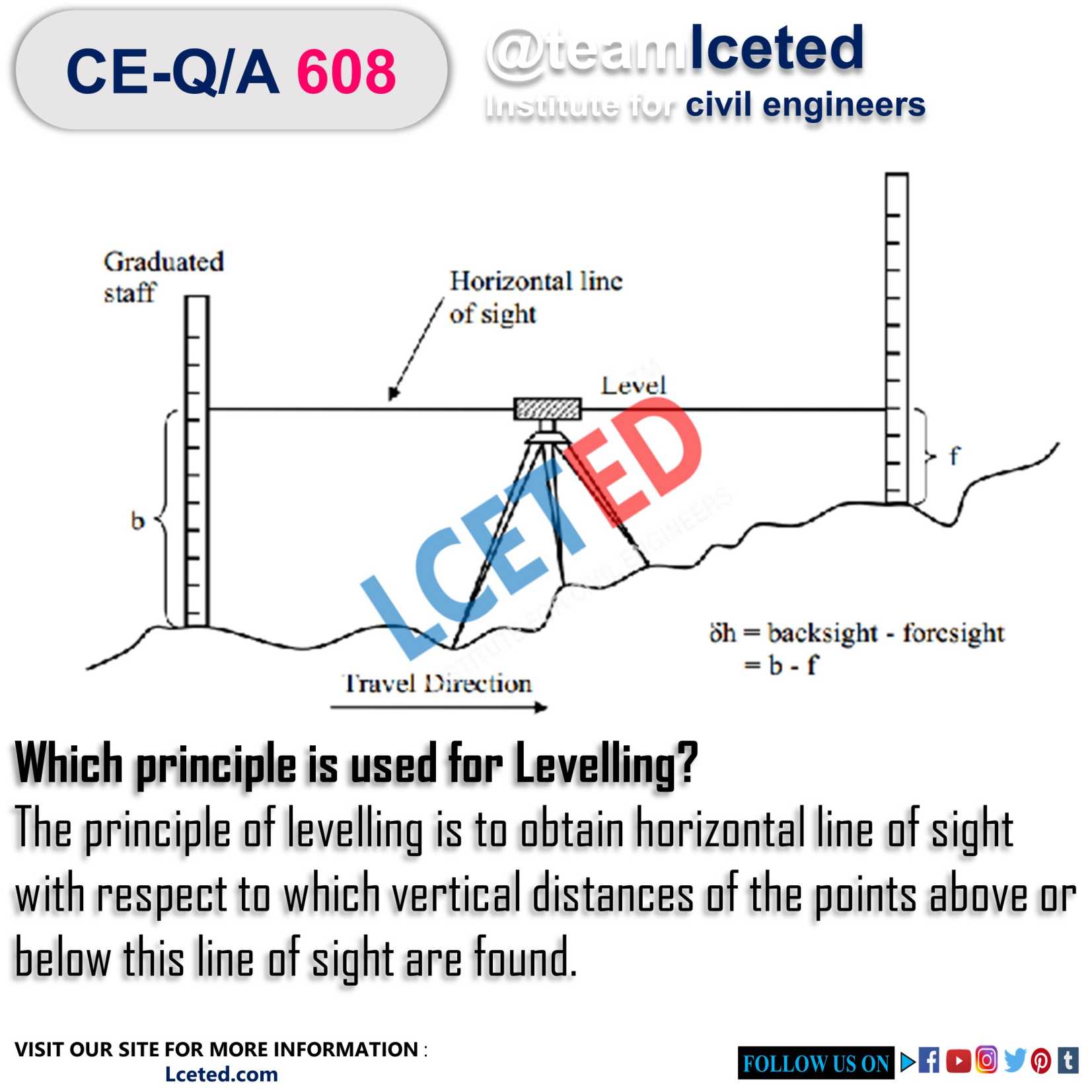TECHNICAL TERMS USED IN LEVELLING
1. Level
surface: A level surface is any surface parallel to the mean
spherical surface of the earth. It is a curved surface, which at each point is
perpendicular to the direction of gravity at that point. Every point on a level
surface is equidistant from the centre of the earth (below Figure).
2. A
level line: A level line is a line lying on a level
surface. It is normal to the plumb line at all points (below Figure).
3. A
horizontal plane: A horizontal plane through a point is a
plane tangential to the level surface at that point.
4. A
horizontal line: A horizontal line is any line lying in the
horizontal plane.
5. A
vertical line: A vertical line at any point is a line
normal to the level surface through that point.
6. Elevation:
The elevation of a particular point is the vertical distance above or below a
reference surface. Usually, the mean sea level is used as a reference.
7. Mean
sea level (MSL): Mean sea level is obtained from the average
height of the sea’s surface for all the stages of the tide, over a period of
18.6 years.
8. Datum:
Datum is any arbitrarily assumed level surface to which elevations are
referred.
9. Reduced
level (RL): The reduced level of a place is its
elevation or vertical distance above or below the datum or any fixed point.
10.
Line of sight: It is the imaginary line joining the intersection of the crosshairs of the diaphragm to the optical centre of the
object glass and its continuation.
11.
Backsight (BS): A backsight is the first staff reading taken
after setting up the instrument at any position. This will always be reading
on a point of known elevation. It ascertains the amount by which the line of
sight is above or below the elevation of the point. Backsight enables the
surveyor to obtain the height of the instrument.
12.
Foresight (FS): A foresight is the last staff reading taken
before shifting the instrument. This will always be reading on a point whose
elevation is to be determined. This reading indicates the shifting of the
instrument. It is also generally known as minus sight as the fore sight-reading
is always subtracted from the height of the instrument (except when the staff is
held inverted) to obtain the elevation.
13.
Intermediate sight (IS): An intermediate sight is any staff
reading, taken on a point of unknown elevation, after the back sight and before
the foresight. This is necessary when more than two staff readings are to be
taken from the same position of the instrument. It may be noted that for one
set of a level there will be only a backsight and foresight but there
can be any number of intermediate sights.
14.
Changepoint (CP): This is an intermediate staff position and
it is used for the purpose of shifting of the instrument. Both backsight and
foresight are taken from this intermediate staff position. Great care is
necessary for taking readings at the change point since an error in reading
affects every succeeding point of observation (elevation). Any firm point,
which can be easily found, may serve as a change point.
15.
Benchmark (BM): A benchmark is a fixed point of known
elevation and the elevation of this point will be noted on it with respect to a
datum. The reduced level of the benchmark is used to determine the reduced levels
of other points. The benchmark is usually taken as the plinth of an important
building, top of parapets of bridges, etc. It will be marked by an identifying
mark like a cross mark or a circle with a dot at its centre.
If you find
This information is helpful, please share it.
Thanks! For reading the article.











Nice
ReplyDelete